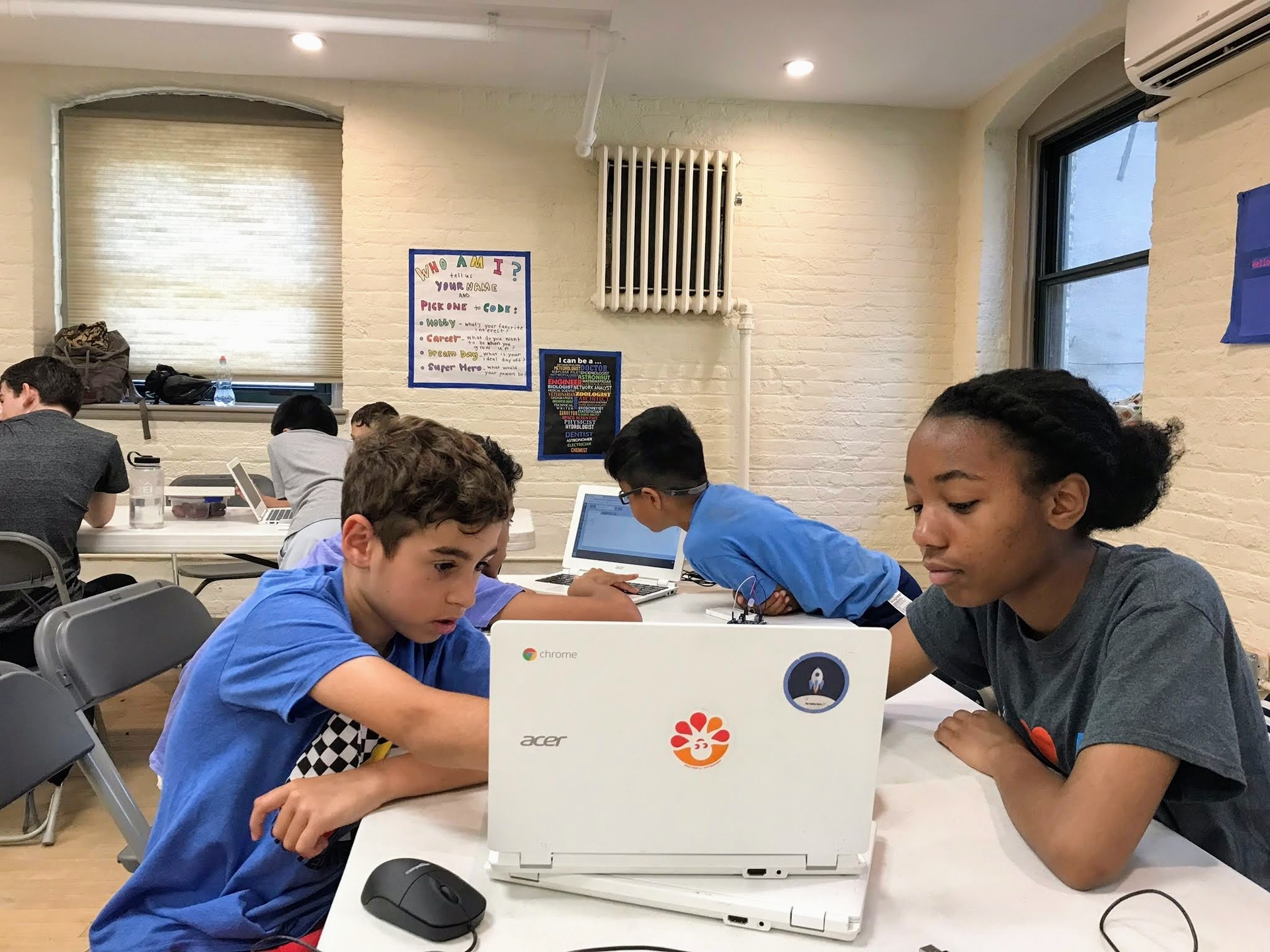The Magic of Socratic

“I cannot teach anybody anything. I can only make them think.” —Socrates
We often talk about our use of the Socratic method at The Coding Space. Why? Because it is integral to what we believe about learning: that it’s most effective when students are given space and time to forge their own connections. Our teachers are not pitchers of knowledge filling the cups of our students. Instead, our teachers act as stand-ins for the inner critical voice that we want our students to develop and eventually use to solve problems on their own.
We do this by helping students see problems from new angles, inviting them to look more closely, and asking questions about their work so they can learn to do the same. It’s not about how we as teachers believe they should solve a problem; it’s about how they think they should solve it -- and what they learn as they experiment with their own ideas. By not dispensing easy answers, we are encouraging them to practice critical thinking, teaching them how to synthesize information, and holding space for them to make deeper and more personalized connections than they would if we fed them solutions.
New students are sometimes confused by this methodology. Because of the traditional education system to which many have become accustomed, students often come to us with no conception of self-driven learning. They are so used to depending entirely on their teachers that they don’t understand their own innate resourcefulness. Our primary objective in using the Socratic method is to teach the very opposite, proving to students that they contain valuable wisdom and intuition about the world and have what it takes to devise their own solutions.
Below is an example of how this might play out in our classrooms, as a student tries to make a ghost hide and show every two seconds in our classic Untutorial, Ghostbusters:
Step 2: Make the ghost hide & show every 2 seconds
Student: “I have no clue what to do.”
Teacher: “Can you re-read the step for me? Are there any words that stand out?”
Student: “Show, hide, 2 seconds”
Teacher: “Do you see any blocks that would make it show or hide?”
Student: [Student looks through blocks] “Okay, I got it to hide, but how do I make it come back?”
Teacher: “What do you mean by ‘come back’?
Student: “Make it show.”
Teacher: “Do you see a block that would make it show?”
Student: “Okay, I found it. But it’s happening too fast.”
Teacher: “What’s happening too fast?”
Student: “It’s not showing for long enough.”
Student: “How would you make it show longer?”
Student: “Wait 2 seconds?”
Teacher: “Yes! Can you find a block that does that?”
The magic of Socratic is that, in the above example, the teacher has actually told the student nothing. By asking questions and modeling a thought process, the student came to the solution all on their own. Once they learn they have this power, the sky’s the limit.
We strongly believe in this method and all of our teachers go through an intensive training process to ensure we are inspiring all of our students. Learn more about our teaching philosophy or contact us to learn more about our classes so that your child can grow and learn with us!